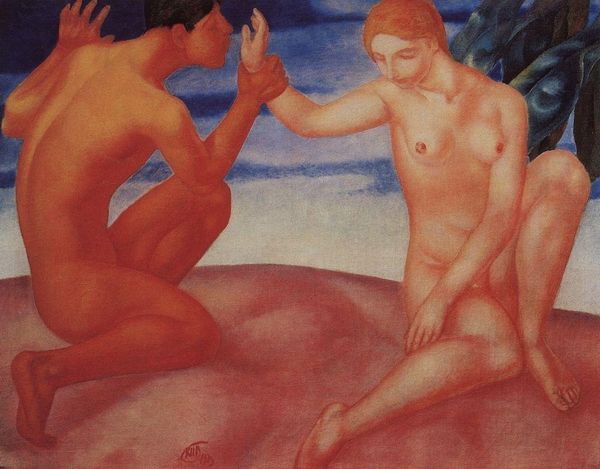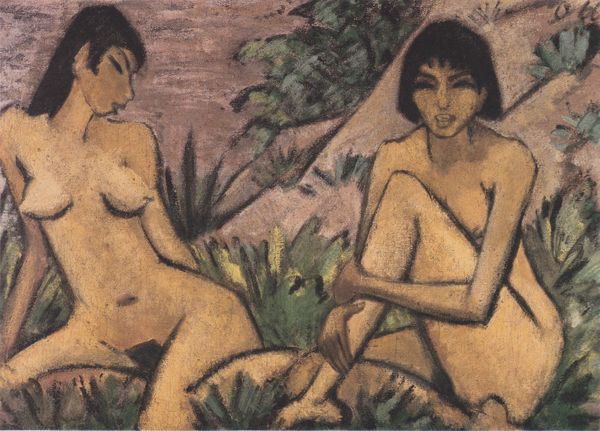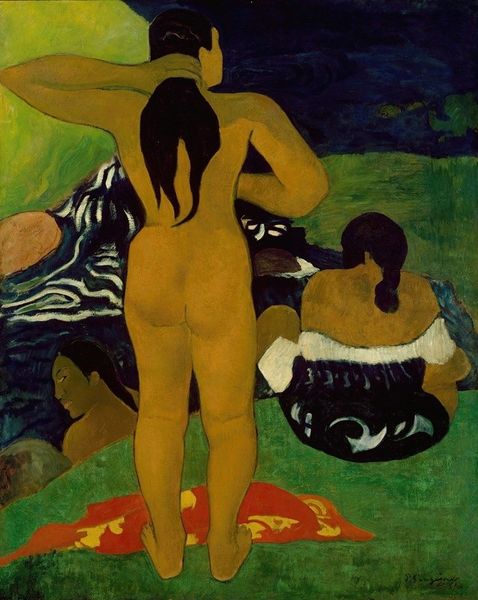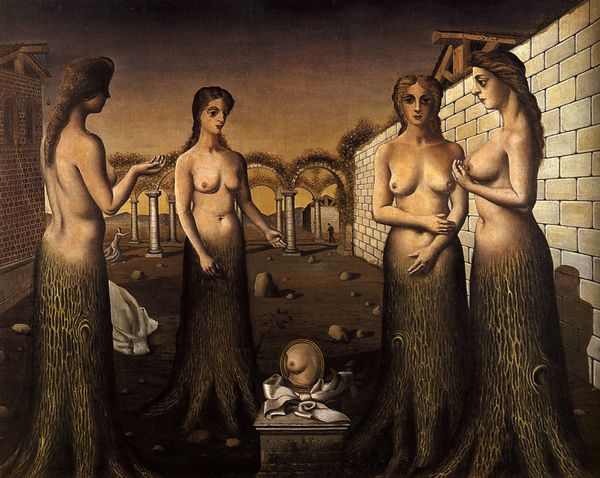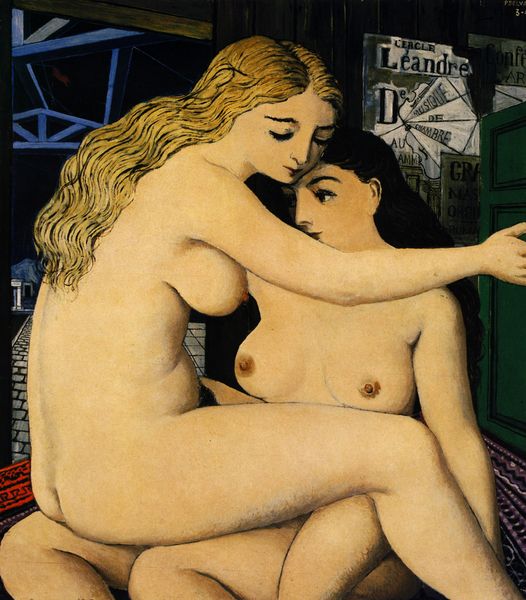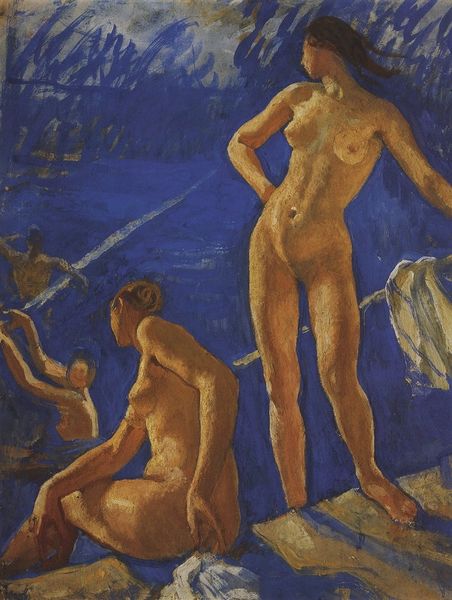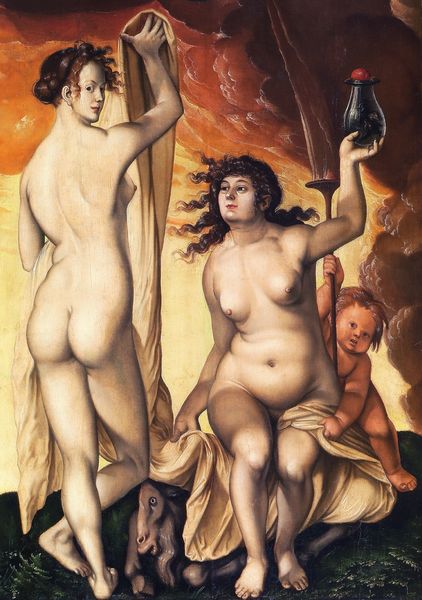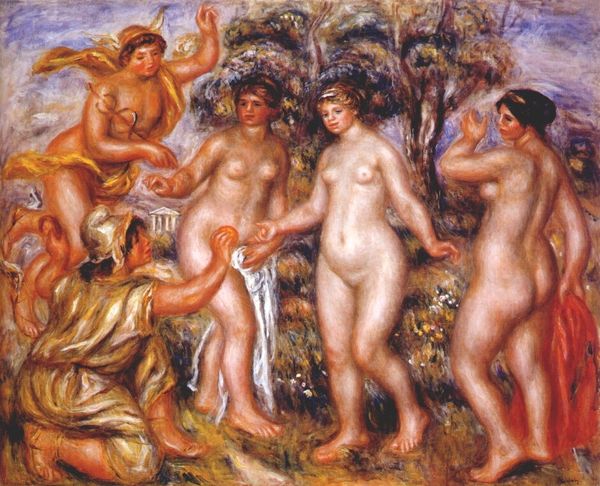
painting, oil-paint
#
painting
#
oil-paint
#
landscape
#
figuration
#
oil painting
#
academic-art
#
nude
#
realism
Copyright: Carlos Quizpez Asín,Fair Use
Curator: Before us is "Las Bañistas," or "The Bathers," a 1943 oil painting by Carlos Quizpez Asín. What are your initial thoughts? Editor: I’m immediately struck by a sense of serenity. The subdued palette, the flowing water… it evokes a sense of tranquility, even reverence for the natural world and the female form. Curator: The composition is rather deliberate. We have three female figures arranged within this idyllic landscape, each subtly engaging with the water, the quintessential feminine symbolism of creation and purification. The smooth, almost sculptural quality to the figures contrasts sharply with the stylized, more angular depiction of the surrounding landscape, creating an interesting tension. Editor: I think it's impossible to ignore the gaze of the central figure. It’s direct, confronting even. In 1943, Asín was working within a very specific artistic and political context in Peru, part of a movement grappling with Indigenismo. What do you think this gaze tells us about Asín's positioning of Indigenous women at this moment in Peruvian history? Is this agency or objectification? Curator: A pertinent question. From a formalist perspective, one might consider that the artist is presenting the viewer with this triangular composition and its relationship to these tonal modulations between foreground and background, and the relationship of vertical, angular background planes to soft curved, voluminous figures. Semiotically, we might even consider how each shape or gesture becomes signifier... Editor: While interesting, isn't it perhaps too easy to extract art from sociopolitical contexts? Here, you see depictions of three nude Indigenous women, their skin bronzed like the sun-baked rocks. Asín, a criollo artist, borrows visual codes of European modernism to frame Indigeneity in his own terms. Surely, his depictions are not merely a formal exploration, right? Curator: Naturally, historical contexts must be recognized. The deliberate construction and arrangement can’t be discounted, particularly given its simultaneous figuration and realism within Asín’s overall body of work. The interplay of form, color, and subject certainly produces meaning…but must necessarily take the artist’s lived experience as one potential perspective. Editor: I agree that formalism sharpens our perspective, but to truly comprehend such artwork demands more than formalist musings. Only then can we grasp art’s impact as history and lived reality, intertwined on canvas. Curator: A perfect way to frame its complexities. There's much here that meets both the eye and mind.
Comments
No comments
Be the first to comment and join the conversation on the ultimate creative platform.
